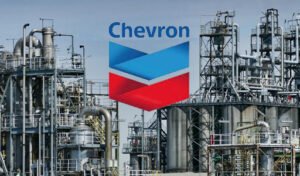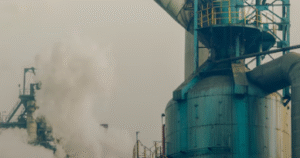# Europe’s Largest Green Hydrogen Plant Under Construction: A Game-Changer for Clean Energy
### $BASF $SIEGY $HYDR
#GreenHydrogen #RenewableEnergy #HydrogenEconomy #CleanTech #SustainableInvesting #EnergyTransition #ClimateAction #BASF
—
## **Germany Leads the Way in Green Hydrogen Revolution**
Germany is setting a new benchmark in renewable energy with the construction of Europe’s largest green hydrogen facility. This groundbreaking project, a collaboration between industrial giant **BASF ($BASF) and Siemens Energy ($SIEGY)**, has the potential to significantly cut carbon emissions while strengthening the **hydrogen economy** in Europe.
The facility features a state-of-the-art **54 MW Proton Exchange Membrane (PEM) electrolyzer**, capable of generating over **8,000 metric tons of green hydrogen annually**. This development marks a significant step in transitioning to **clean energy sources** and reducing dependency on fossil fuels.
With governments and investors increasingly focused on **hydrogen as a key pillar of the clean energy future**, this facility could reshape Europe’s industrial landscape, especially in sectors like chemicals, steel, and transportation.
—
## **A Massive Leap for Green Hydrogen Technology**
### **The Key Specifications of the Hydrogen Facility**
The plant is designed to **produce up to one metric ton of green hydrogen per hour**, ensuring a steady supply for **BASF’s production operations**. This hydrogen will serve as a crucial **chemical feedstock**, reducing reliance on carbon-intensive processes.
Unlike conventional **grey hydrogen**, which is derived from natural gas and emits CO₂, this project utilizes **PEM electrolyzer technology** to produce **zero-emission hydrogen** from **renewable energy sources**. The estimated emissions reduction? A staggering **72,000 metric tons of CO₂ annually**—equivalent to removing **around 15,000 gasoline-powered vehicles from the road each year**.
### **Significance for the Hydrogen Economy**
The European Union has been aggressively pushing for a **hydrogen-based energy transition** through initiatives like the **EU Hydrogen Strategy**, which aims to deploy **40 GW of renewable hydrogen electrolysis capacity by 2030**. This BASF-Siemens project will be a crucial part of that ecosystem, providing **scalable solutions** for industrial applications.
With the global **green hydrogen market expected to exceed $89 billion by 2030**, investments in **hydrogen infrastructure** are accelerating, making this project a catalyst for broader industrial adoption.
—
## **Market & Financial Impact: What Investors Should Watch**
### **BASF & Siemens Energy: Stock Market Angle ($BASF, $SIEGY)**
For investors, this project represents a **strategic shift** in the energy and chemical industries. BASF ($BASF) is one of the world’s largest chemical producers, and its early adoption of **green hydrogen** places it ahead of competitors in **sustainability-focused markets**. Expect increased investor interest as ESG (Environmental, Social, and Governance) initiatives gain momentum.
Siemens Energy ($SIEGY), a leader in renewable energy and hydrogen solutions, stands to benefit from the **expanding hydrogen infrastructure market**. With governments offering subsidies and incentives for **hydrogen production**, Siemens’ advanced **electrolyzer technology** could see wider adoption beyond this project.
**Potential stock market impact:**
– Increased investor confidence in **BASF and Siemens Energy’s long-term sustainability strategy**
– Greater interest in **green hydrogen stocks**, including suppliers of electrolyzer technology
– Potential for government-backed funding and subsidies boosting revenues
—
## **Broader Implications for Global Energy Markets**
While **Europe leads the green hydrogen race**, countries like **China, the U.S., and Japan** are also scaling up hydrogen projects. Germany’s leadership in implementing large-scale **hydrogen infrastructure** could serve as a **global model** for decarbonization strategies.
Industries like **steel manufacturing, aviation, and heavy transport**—which are notoriously difficult to decarbonize—will be key beneficiaries of this shift. As costs for **green hydrogen** production decline with **technological advancements and scaling**, its adoption will likely **accelerate worldwide**.
—
## **Conclusion: A Defining Moment for Clean Energy**
The construction of **Europe’s largest green hydrogen plant** represents a major milestone in the **clean energy revolution**. With a projected **CO₂ reduction of 72,000 metric tons annually** and the ability to **produce 8,000+ tons of hydrogen per year**, this facility will **reshape industrial energy consumption** and reinforce **hydrogen’s role in the global energy transition**.
Investors should keep a close eye on **BASF ($BASF) and Siemens Energy ($SIEGY)**, as their leadership in **green hydrogen technology** could present **long-term growth opportunities**. As **governments, businesses, and investors commit to a low-carbon future**, this project underscores how **green hydrogen could soon become a mainstream energy solution**.
With momentum building in **sustainable energy investments**, is now the time to bet on the **hydrogen economy**? Let us know your thoughts in the comments.
—
### **Key Takeaways:**
✅ **Europe’s largest green hydrogen plant is under construction in Germany**
✅ **BASF & Siemens Energy leading with a 54 MW PEM electrolyzer**
✅ **Potential CO₂ emissions reduction: 72,000 metric tons annually**
✅ **Global hydrogen market projected to reach $89B+ by 2030**
✅ **Significant investment opportunities in hydrogen infrastructure & clean energy stocks**
#HydrogenRevolution #ZeroEmissions #EnergyInnovation #GreenInvesting #BASF







Comments are closed.